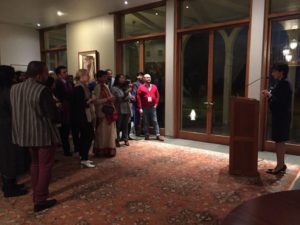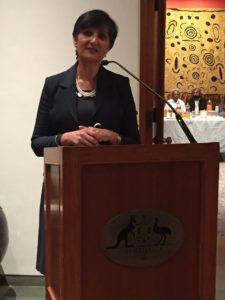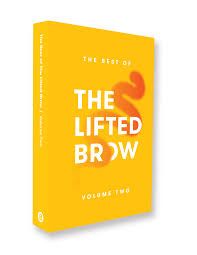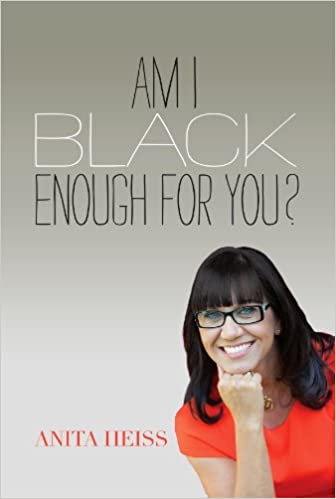
The Lifted Brow is an Australian literary magazine which was established in 2007. In a very short time it has gone on to establish a formidable reputation in the global literary landscape. A few years later they established a publishing firm call Brow Books which too has established a fantastic reputation as well. Most recently Brow Books have sold UK and  Commonwealth rights of Intan Paramaditha’s Apple and Knife , short story collection, to Harvill Secker.
Commonwealth rights of Intan Paramaditha’s Apple and Knife , short story collection, to Harvill Secker.
“Paramaditha’s stories are shockingly bold and macabrely funny, powerfully defamiliarising the cultural lore of patriarchy. What makes them special is their lack of interest in representing women as victims – here, the taboo of feminist anger is flagrantly and entertainingly broken.”
–The Saturday Paper
Sam Cooney is the publisher of The Lifted Brow and Brow Books. He came to India in January 2018 as part of the Australian Publishers delegation. The delegation is organised by the Australia Council for the Arts and has now become an annual feature. The main aim is to encourage cross-pollination of the two publishing industries and fostering business ties. I met Sam Cooney at a  reception hosted in January 2018 by H. E. Harinder Sidhu, High Commissioner, Australia at her residence in New Delhi.
reception hosted in January 2018 by H. E. Harinder Sidhu, High Commissioner, Australia at her residence in New Delhi.
When we met Sam gave me a copy of The Best of The Lifted Brow: Volume Two that blew me away with the quality of contributions. This is what I wrote to Sam upon reading the book.
I thoroughly enjoyed reading the second volume. Now I can understand why publishers are reading this journal closely to spot new talent. It is extraordinary  craftsmanship you have in the bunch of writers. Whether it is fiction or non-fiction, all write with such strength and powerful voices. The manner in which they express opinion and play with the form of prose and poetry to make it their own is splendid. I cannot decide which of the contributions is my absolute favourite. It probably is “Humans pretending to be computers pretending to be humans” about Amazon Mechanical Turk. Wow! It is at moments like this I never know if we are now living in a speculative fictionalised world or is this reality? It is a bit surreal. After reading the essay I cross-checked with a few of my programming friends who said this particular business exemplifies the sheer ingenuity of Bezos to monetize at every given opportunity.
craftsmanship you have in the bunch of writers. Whether it is fiction or non-fiction, all write with such strength and powerful voices. The manner in which they express opinion and play with the form of prose and poetry to make it their own is splendid. I cannot decide which of the contributions is my absolute favourite. It probably is “Humans pretending to be computers pretending to be humans” about Amazon Mechanical Turk. Wow! It is at moments like this I never know if we are now living in a speculative fictionalised world or is this reality? It is a bit surreal. After reading the essay I cross-checked with a few of my programming friends who said this particular business exemplifies the sheer ingenuity of Bezos to monetize at every given opportunity.
I also like the way the editorial board of TLB has arranged the articles. So while you can dip into it at any point there is a fascinating trajectory from fiction to non-fiction with some of it sounding so real that it is impossible to tell which zone are we in — real or imagined. I was stunned to read the experimental essay “Two or three things auteurs know about auteurs” and that the dialogue in this piece is constructed entirely from quotes by Jean Luc Godard and Baz Luhrmann.
Here is an interview with Sam Cooney. It has been lightly edited.

Sam Cooney.
Photographer: Alan Weedon
*****
Why did you decide to launch the literary magazine The Lifted Brow? How did you select the marvellous name?!
The Lifted Brow was founded by writer and editor Ronnie Scott, with the first issue being published in January 2007 when he was in his very early twenties. He edited the magazine for five years/for thirteen issues. (You can read an interview with Ronnie
here at HTMLGiant which sheds a lot of light as to how and why
The Lifted Brow was created, and its purpose.) The origins of the magazine’s name are a mystery – some say that the name just magically appeared on the front cover without anyone even typing it, some say that its anagram for the worst swear word there is in the English language, some say you can simply ask Ronnie Scott and he’ll tell you a very straightforward and unremarkable story of how it was decided.
How do you seek contributions? According to Wikipedia you have an impressive list of established writers as well. How did you manage to persuade writers like Neil Gaiman and Margaret Atwood to contribute?
The various editors of the magazine (you can see them all
here) source contributions both by direct commissioning and by reading unsolicited submissions. Each issue of the magazine is made up of a combination of commissioned work and submissions – it’s central to our ethos that we are always open for submissions from new writers/writers we don’t already know. For the bigger writers we’ve published over the years: it never ceases to amaze how easy it is to find the email address of any writer, no matter how famous, and it’s also always a surprise how positively any writer can react to an unknown editor/publication contacting them for new work if that editor/publication is doing so with genuine keenness and built from a love and respect for that writer’s work.
What is the process of selection and editing for the essays?
For each round of submissions, every piece is read and assessed by several people – a mix of editors and interns. These readers assess pieces against criteria we’ve internally agreed upon—criteria that is very specific to The Lifted Brow, specific to the kinds of work we want to publish and why—and then we come up with a longlist of the best pieces, which are then discussed by the editors, who ultimately choose which pieces to work on and publish.
Our editorial process is incredibly rigorous and thoughtful. From all I know of the industry, I have no doubt whatsoever in saying—and it is not meant to sound self-aggrandising to say—that our editorial process is the most generous and detailed of any literary publication in Australia. This is especially important because we choose to work with writers who are often emerging (and this doesn’t mean young), and we also work with writers who are constantly pushing the boundaries of writing. Sometimes we have worked with an writer for over a year on a piece, going back and forth with edits until the piece is the best it can be.
We also sometimes open for pitches and not just for finished pieces – in these instances the editors assess the pitches and then choose the ones they will ask the writers to write for us.
What have been your learnings from managing a literary magazine for so many years — publishing, reading patterns, changes in literature, distribution etc ?
My learnings are far too many and far too deep to even outline here properly. But a couple of important ones: I’ve learned that the single most valuable quality that a publication and organisation must maintain is its integrity. What The Lifted Brow—and our entire organisation has—is the complete trust of its communities, whether it be readers, writers, artists, funding bodies, other publications, publishing houses, or people who belong in several of these communities.
I’ve also learned that there is nothing more important than energy and enthusiasm – that the best editors are people who are completely devoted to seeking out the most interesting work, and that there are no shortcuts to do this. There are too many lazy editors who wait for the writers and writing to come to them, to their inboxes, or via social media, or via their group of friends or acquaintances. This is how the status quo is maintained, and it’s wrong.
The only way the magazine has been able to sustain itself for so long is that our entire staff are all volunteers, and always have been. It sucks, because every single person who has ever worked on The Lifted Brow deserves to have been paid for their time, labour, skills, knowledge, etc. But the plain fact of the matter is that no matter how we’ve been able to find money (sales, government funding, events, etc), once we’ve covered printing costs, contributor fees, and all the many other costs of producing a publication and running an organisation, there’s never been enough money to pay our staff. And we’ve never wanted to change what we make and how we do it in order to chase short-term dollars – we’ve always said that we are trying to make meaning and not money, that our goal is always to make whatever money we can from exactly the work we want to publish. Still, paying staff my single biggest goal, and is why I am now actively pursuing a not-for-profit model, so that we can unlock ways of securing income that will allow us to pay staff.
We’ve recently transitioned from a private company to a not-for-profit organisation. We’ve always operated like a not-for-profit in that any money we make will always go back into our operations, but now we are legally and structurally a not-for-profit, including being registered with various government bodies and having a board and etc. We hope to be able to pursue funding through various trusts and funds that are only open to not-for-profits, as well as looking at philanthropy and other approaches. It’s a model that other organisations have successfully realised, and we are looking to them for clues and guidance.
Why did you decide to launch a publishing house — Brow Books — in addition to the literary magazine? Does it not put a strain on the editorial team as the cycles of publishing are very different.
We launched Brow Books for the same reason that The Lifted Brow was launched – because no one was doing something that we believe is hugely important. (The Lifted Brow was created because Australian literary journals of that era had become quite staid/were closed off to writers who didn’t conform to a narrow definition of ‘good’ writing, and Ronnie Scott was reading other literary publications from around the globe and decided that Australia desperately needed one.)
Brow Books will publish books that other presses won’t take on because they are deemed (often mistakenly, in our belief) commercially unviable, or too weird or provocative – books that are incredibly important to our society and culture, writing that feature voices and ideas that need to have that mainstream platform of being published in book form. We don’t see enough of the kinds of writers and writing we publish in our magazine and on our website go on to publish books, which we’ve long thought was frustrating – and in Australia, if you are a writer then you basically need to have access to book publishing in order to sustain a career.
One central guiding principle to Brow Books is that we won’t publish a book if another Australian press can and would do a better job of publishing that book, and we haven’t strayed from that so far. Brow Books exists to fill a gap – there are too many book presses in Australia publishing the same kinds of books, competing with each other, and we definitely don’t want to add to that noise.
Brow Books staff are largely separate from those who make our magazine – as you’ll see
here.
Who commissions books on behalf of Brow Books or is it the same editorial board of TLB?
Me and the rest of the book editors are in charge of finding titles for Brow Books – whether it’s through our open submissions or through commissioning.
In an interview with Kill Your Darlings you remarked that while it is interesting to review existing literary magazines-cum-book publishers such as Granta, McSweeneys, New York Review of Books, these models cannot be copied exactly in Australia. What are these differentiating factors you refer to?
I said that these models couldn’t be copied exactly, but that something very similar could work. Different factors include: our population in Australia is smaller and sales numbers are commensurate; there isn’t a tradition or culture in Australia of philanthropy in the literary arts; we’re trying to set our organisation up in an era that is distinct from when these others were established; that pretty much all of these above mentioned literary magazines-cum-book publishers had/have one very rich person propping them up for at least a period of time.
What are the key differences in your editorial practices/commissioning for The Lifted Brow as a literary magazine/longform and for the book publishing programme? Or to put it another way — what are the focus areas of these two very distinct forms of literature that you are now responsible for?
In fact, the focus areas are the same! We see Brow Books and
The Lifted Brow (as well as
our website publishing, our events, and everything else we do) as being different ways to attack the same goals.
I liked your phrase “agile publishing”. How do you propose to apply it in your publishing programme/s? Will it also involve experimentation with forms and formats or the experimentation will be restricted to print formats alone?
Any kind agility we have will be due to our size, and our willingness to be proactive in our commissioning. We aren’t reinventing publishing in any way – we are huge fans of books and how publishing has worked, but we also see big gaps and problems particularly in Australian publishing. Our experimentation, at least in the short term, will largely be in respect to content – to who we publish, and what kinds of writing we publish. We are much less interested in experimenting wildly with physical or digital formats – it’s not where our interest nor where our strengths lie.
17 June 2018






